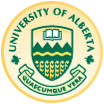 |
|
||||
Histoire et philosophie des mathématiques
Org: Tom Archibald (SFU), Alan Richardson (UBC) et Glen van Brummelen (Quest Univ.)
[PDF]
Org: Tom Archibald (SFU), Alan Richardson (UBC) et Glen van Brummelen (Quest Univ.)
[PDF]
- TOM ARCHIBALD, Simon Fraser University
Picard and a Galois Theory for Differential Equations [PDF]
-
In 1882 Sophus Lie gave lectures in Paris that inspired the young Emile Picard to see if Lie's theory of transformation groups could serve in creating an analogue to Galois theory for differential equations. Working in parallel to Lie himself, Picard and his students (notable Vessiot) made valiant efforts to formulate such a theory, first of all for linear ordinary differential equations. Vessiot in fact became Lie's student in Leipzig. In this talk, we go beyond the discussions of this material by Thomas Hawkins and Armand Borel to investigate the role of Picard's work, both in the development of Lie theory.
- J. L. BERGGREN, Simon Fraser University
Numbers and Numerical Algorithms in China and Medieval Islam [PDF]
-
There are a number of striking similarities between numeration systems and arithmetic procedures in China and medieval Islam. Including use of decimal place value system, algorithms for multiplication and the extraction of roots, the approximation of irrational quantities, and the arrangement of whole numbers in magic squares. We shall survey these similarities and conclude with a consideration of the extent to which they suggest direct or indirect historical connections. Or are they simply results of clever people in two cultures working with common tools on common problems?
- JAMES EVANS, University of Puget Sound
New Views of the Antikythera Mechanism [PDF]
-
The Antikythera mechanism, a gearwork astronomical computer, was built around 150 BC by an ancient Greek mechanic, lost in a shipwreck around 80 BC, and recovered in 1901. Recent study has greatly improved our comprehension of the mechanism. This talk will describe the current state of understanding and present some new results by the University of Puget Sound Antikythera Mechanism research team.
- DEBORAH KENT, Hillsdale College
\textit{The American Journal of Mathematics}: Circulation and Community Formation [PDF]
-
In 1878, under the auspices of Johns Hopkins University, James Joseph
Sylvester founded \textit{The American Journal of Mathematics} as a venue
for mathematicians to exchange ideas with the expressed goal of
propagating mathematical knowledge in the United States. Nearly half
of the contributions during the first decade came from Sylvester and
his colleagues at Johns Hopkins, but, over time, both the number of
contributors and the size of the readership expanded. This paper will
discuss the contents of the journal and examine its role in the
development of a mathematical research and publication community.
- MENOLLY LYSNE, IHPST at University of Toronto
Why do we remember Lagrange’s but not Laplace’s work on singular solutions? [PDF]
-
In 1772 and 1774 respectively, Laplace and Lagrange wrote memoirs on determining singular solutions of differential equations, but when people look back, often Laplace’s paper is forgotten. While there are obvious similarities to the memoirs, the authors presented their work completely differently and used different methods. In comparing these two papers, I will investigate why Lagrange is remembered but also the aspects of the friendship between Laplace and Lagrange that potentially led Laplace not to improve his method when presented with Lagrange’s superior one.
- JOSIPA PETRUNIC, University of Toronto, IHPST
The local nature of mathematical knowledge: mathematics in Edinburgh, 1830-1870 [PDF]
-
This paper relates to mathematics in Edinburgh leading up to and just following the Universities Act (Scotland) in 1858. Philip Kelland, Professor of Mathematics from 1838, and Peter Guthrie Tait, Professor of Natural Philosophy from 1860, were both Cambridge-trained Senior Wranglers. Yet, neither actor advocated a wholesale implementation of Cambridge-style Tripos examination in Edinburgh, despite the fact the Universities Act provided them with the space to do so. Tait and Kelland also collaborated on the development of the highly analytical mathematics of quaternions, though neither actor sought to impose an analytic-heavy curriculum on their students. Despite their potential to serve as conduits through which Cambridge mathematics could have been more explicitly imposed in the north, both Kelland and Tait contributed to the development of mathematical curricula in Edinburgh in ways that were shaped by the university’s institutional geography—a space where natural philosophy was privileged over and above symbolical mathematics.
- ROBERT THOMAS, University of Manitoba
The dramatis personae of the Spherics of Theodosios [PDF]
-
Philip Kitcher has discussed mathematics philosophically in terms of what a superhuman or ideal agent can do. Brian Rotman has discussed mathematical discourse semiotically in terms of what three actors say and do. David Wells understands aspects of mathematics as analogous to abstract games like chess and go, which require competing players. These claims will be tested against the Hellenistic treatise Theodosios's {\em Spherics}.
- GLEN VAN BRUMMELEN, Quest University
The Mathematical Study of Historical Numerical Tables: Successes, Failures, Issues [PDF]
-
Numerical tables, often relegated to the appendices of the history of mathematics, have nevertheless been crucial in the development of science and mathematics. In pre-modern cultures their appearances and roles have been evaluated periodically, but more careful studies of the tables themselves have been attempted only infrequently. Several successful analyses have allowed us to peer behind the curtain at the largely unrecorded computational culture that supported table-making. A couple of efforts have been made to produce systematic tools for analyzing tables, and these methods have led to successful analyses in diverse tables spanning millennia. Problems in this emerging field range from technical to cultural: certain statistical difficulties in studying mathematically-generated data can arise, and a few uncontrolled studies of tables that claimed dramatic but false conclusions have caused historians to view statistical methods with apprehension.








